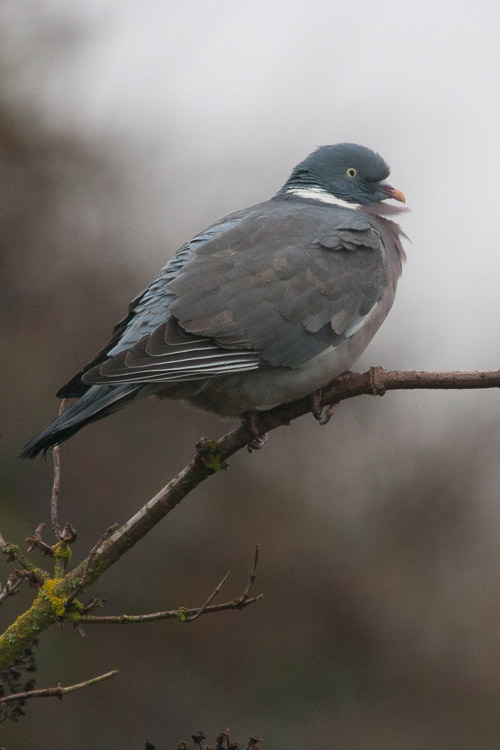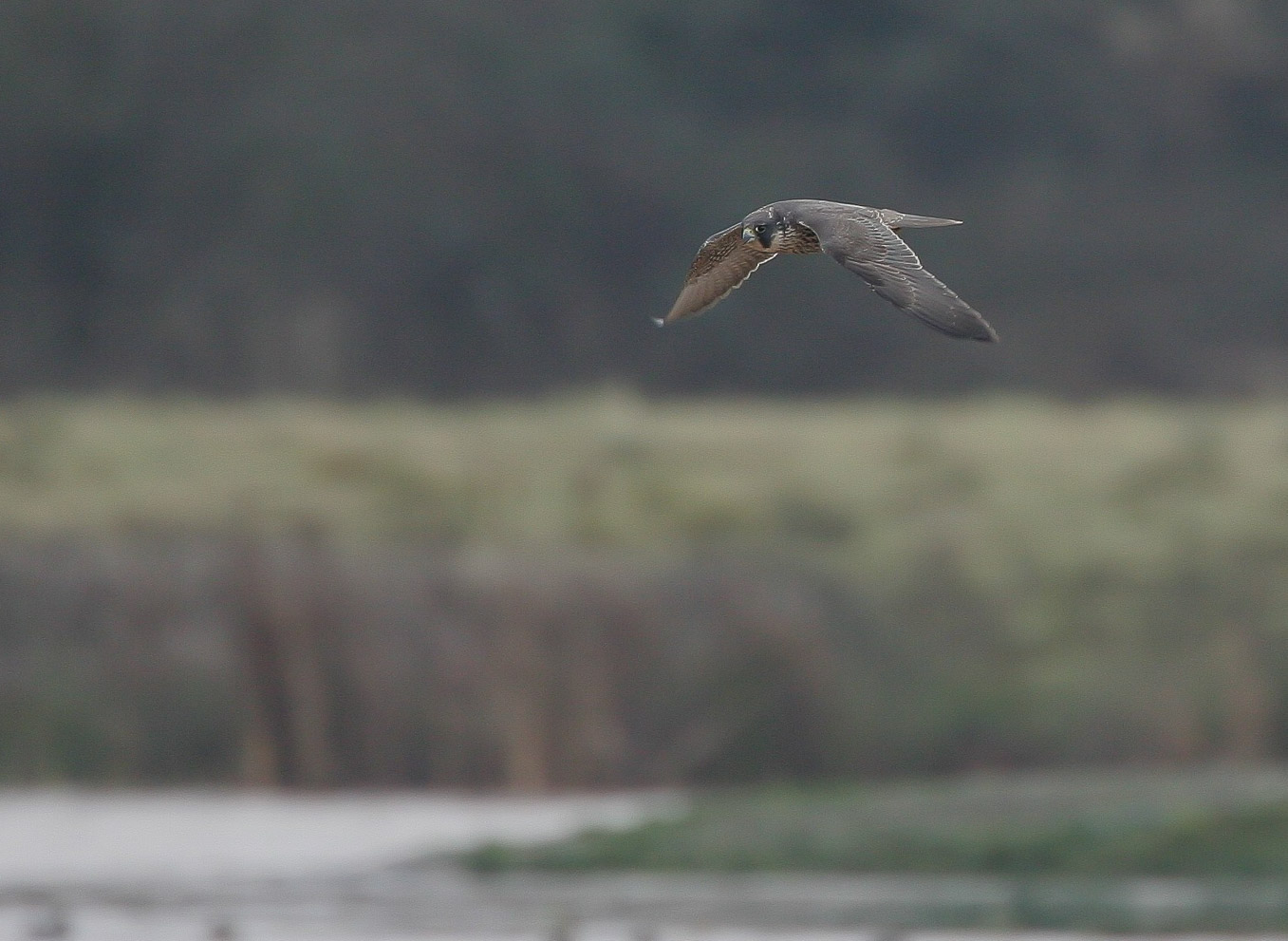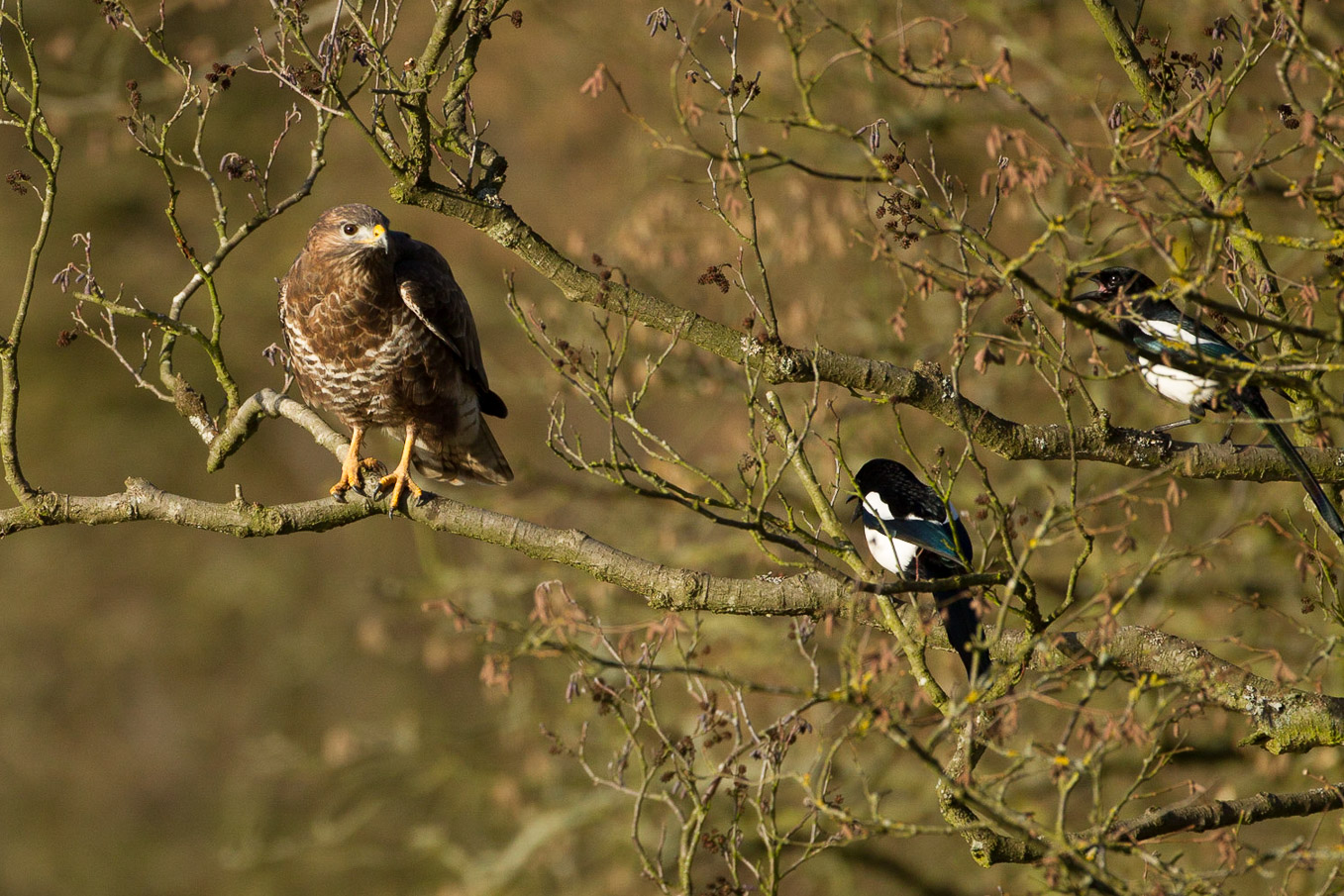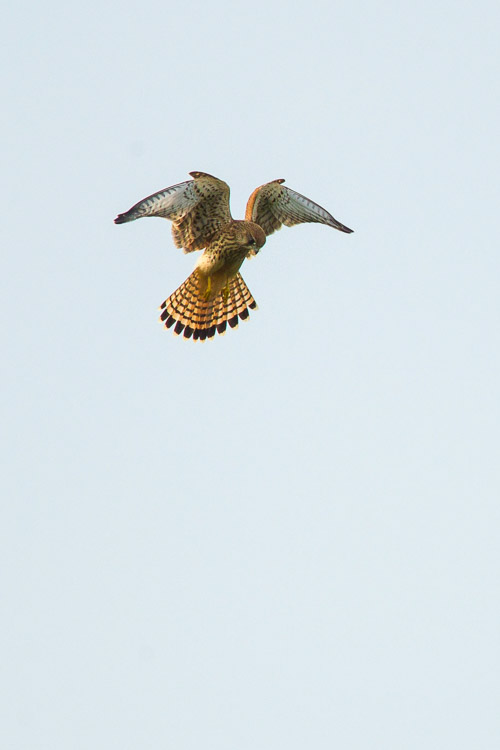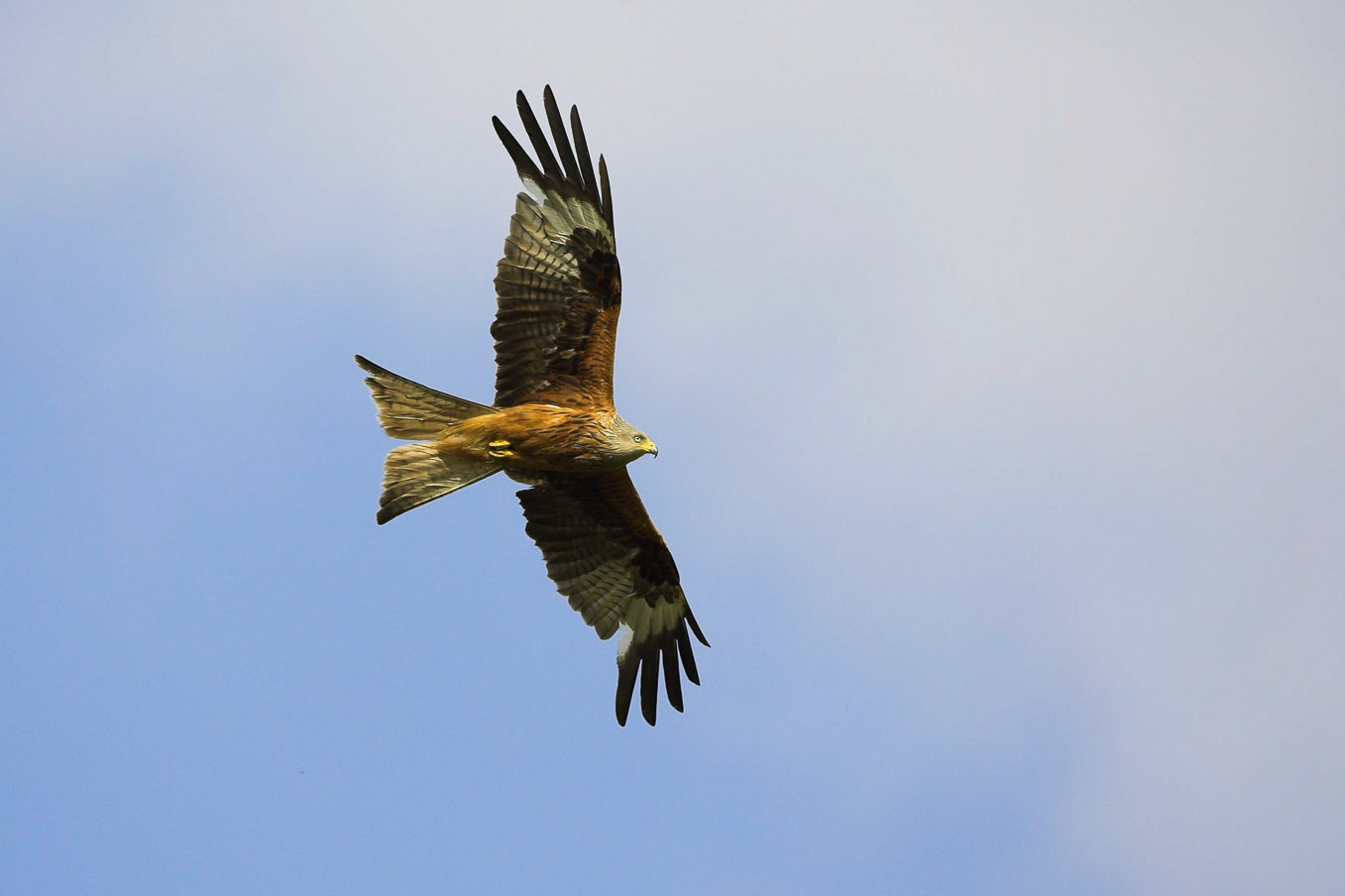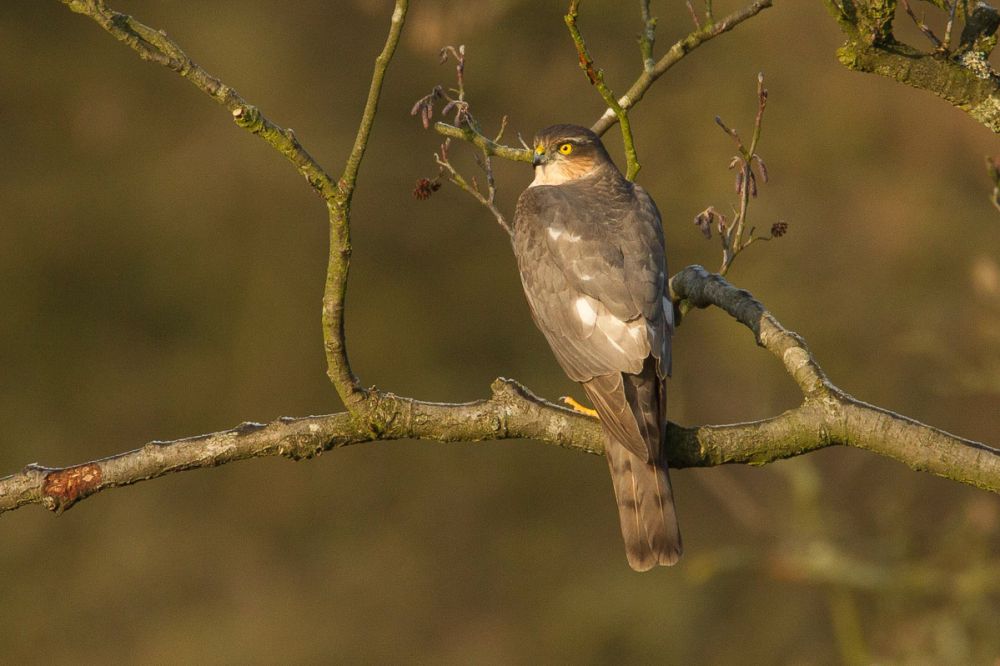
How to see birds of prey
You love birdwatching or wildlife watching and you’re excited to see all our fantastic birds of prey, but you still rarely see them. Why?
You’ll notice that this post is titled ‘how to see birds of prey’, not how to identify birds of prey. Identification is important and fun, but you need to see the bird first, and spotting birds of prey is an acquired skill which is a delight to learn.
This post takes you through how to see birds of prey before it talks about how to know what you’re looking at.
Distinguishing birds of prey from other birds
One of the most important skills you need to see birds of prey is to be able to know whether a bird you’re squinting at from a distance is a falcon or a wood pigeon. This will take some practice – if I had a pound for every time I mistook a wood pigeon for a bird of prey when I first started birdwatching, I’d be writing this from the deck of my yacht – but the below considerations will help speed up the process.
The important thing is to really look at every bird you can see – even if you can only see it from a distance. You’ll be able to do a split-second assessment of its features, size, colour and behaviour in no time. If you wait until a bird of prey is perched near enough for you to immediately notice it and identify it on untrained eyesight alone, you’re unlikely to be successful, but if you know what signs to look for (and which to discount), you stand a much higher chance of spotting birds of prey.
Who else is around?
The easiest way to know whether you’re looking at a bird of prey is to look at what else you can see. If the suspect bird is perched in a tree that has other birds in, then it’s not a bird of prey.
Other birds don’t stick around near a predator – so when you see seven big birds in a tree and think you’ve hit the jackpot and discovered that buzzards are a flock bird (we’ve all been there), you’re probably looking at wood pigeons (again).
Often, the thing that will draw your attention to a bird of prey is the conspicuous lack of other birds where they would usually be abundant. I once had a sparrowhawk in the willow tree in my garden, which I summoned by Sod’s Law (I didn’t have my camera or my binoculars in the house). The only reason I twigged that it warranted further investigation (squinting) is because I realised the rest of the tree was suspiciously empty.
How is it flying?
Some birds of prey have very distinctive flight behaviour that can indicate the species you are looking at.
Buzzards, kites, and eagles are gliding birds – so you’ll rarely see them continuously flapping their wings. If the bird is circling relatively slowly, often with another similar-looking bird, it’s probably a buzzard. If it’s hovering, flapping its wings rapidly but keeping its head completely still, then it’s a kestrel. If the bird dips into water to catch its prey, you’re probably watching an osprey (lucky you!).
Although some birds of prey, like peregrine falcons and sparrowhawks, are smaller and flap more, so are less easily distinguishable as birds of prey, learning the flight patterns of very common birds will help you to recognise anything out of the ordinary.
As mentioned above, wood pigeons are most commonly mistaken for birds of prey. This is because they’re about the right size, they have quite a large wingspan, they have a similar profile to a bird of prey when they’re perching, and their wingbeats make a lot of noise when they take off. Wood pigeons use powered flight – this means they consistently flap their wings to move themselves forward, occasionally using undulating flight – dipping – where they close their wings momentarily. The flight looks laborious and is like the doggy paddle of flying – birds of prey make it look much easier. Once you’ve spent some time watching the flight pattern of wood pigeons, you’ll soon be able to tell them apart from birds of prey.
Are other birds making a fuss?
If a lot of birds make a kerfuffle at the same time, it might be because a bird of prey has entered the area. It might also be you stepping on a twig, or someone’s dog running wild, but if it’s quiet it’s worth a closer look.
If you see several wood pigeons take off from a group of trees at the same time, or lots of smaller birds evacuating a field, have a look around and see if you can spot a predator either flying into the scene or freshly perched at a good vantage point. Scan the sky first, and then look at treetops and posts.
Can you see its feet?
I know what you’re thinking. “Hayley, if I could see the feet, I’d be close enough to be able to identify the bird anyway”. Well, maybe, but sometimes it’s possible to see the type or colour of the bird’s feet from quite a distance away, even when the bird itself still looks like a grey blob.
Look at the branch (or whatever the bird is holding onto) – are there long claws/toes (talons) curling around it? Do the toes you can make out look thick or do the feet look large in proportion to the size of the bird? Do the legs stand out as an orangey/yellow colour? If the answer to any of those questions is yes, you’re likely to be looking at a bird of prey. If the answer is “no, actually, the feet look small, skinny and pink” then you’re back with your best mate the wood pigeon.
Where is it looking?
Get used to noticing what direction birds are looking in. If you see a bird looking inwards in a bush or tree, or staring aimlessly out at the landscape, it’s probably a passerine like a blackbird, thrush or a pigeon. If the bird is looking down (from the sky, a perch, or a tree) at the ground, it might be a bird of prey. This isn’t a hard and fast rule (all birds can look down!), but once you get used to birdwatching you’ll start to distinguish the purposeful watchful eye of predators looking for prey and the skittish gaze of other birds trying not to get eaten.
What colour does it appear?
I know you’re thinking “if I could see the colour, I’d be able to identify it”, but I’m talking about one key question here: does the bird look really dark? The reason you should get used to assessing this when looking at birds from a distance is because another bird commonly confused for a bird of prey is the crow (or rook, jackdaw, or raven: the corvids). These birds are quite big – especially ravens - and like perching at the top of tall trees and surveying the scene below, so are often mistaken for birds of prey. However, all of our birds of prey are light to medium coloured – none of them are black. So, if you can see a bird and it looks very dark, it’s likely to be a corvid such as a crow.
If it’s a nice sunny day you might be able to see more detailed colouring patterns on the bird which can help you identify it. If the bird is mostly brown with a thick band of white running all the way along its wingspan, then it’s a buzzard, but if the white patches only appear towards the tips of the wings, and there’s no white on the bird’s body, then you’re looking at a red kite. If the tail is fully white, you’re looking at a ghost: a marsh harrier. If the bird is brown with black spots or bars – almost like leopard print if you don’t have your glasses on – it’s a kestrel.
What shape is its tail?
This is often something you can make out from a distance. The differences aren’t all significant enough to make easy differentiations, but there are some distinctive shapes. For instance, if you’re looking at quite a large bird with a long, wedge-shaped tail, then you’re probably looking at a red kite. If the medium-sized bird you’ve spotted has a very long tail, it’s probably a magpie rather than a bird of prey. Woodpigeons tend not to fan their tail feathers while they’re perching, whereas sparrowhawks often do.
Using binoculars
I might win an award for stating the blindingly obvious here, but if you’re able to, buy or borrow some binoculars and take them with you whenever you’re out and about. Get used to looking at every bird you see through them, and identifying it. After a while, you’ll start to notice patterns and behaviours that belong to certain types of birds – like those listed above. The factors in this post are meant as an introduction, but everyone has their own favourite ways to identify birds. It might not seem like it will happen at first, but before you know it, you’ll be discounting common birds before you even raise your binoculars.
best binoculars for birdwatching
Taking photos
If you don’t have binoculars, take a photo of birds that you see but can’t identify on the spot. If you’ve got a camera with a zoom lens, great, but even a grainy phone photo will usually do for identification purposes. When you’re back in the warmth with a cup of tea and your bird ID book, zoom in on the photo you took and have a go at matching it to one of the species. If you can, use an editing application to reduce the shadows in the photo and sharpen the image to make it easier for you to spot features of the bird to match to your book or webpage. Remember to check things like beak shape and colour, leg colour, size, rarity, circumstance or location and behaviour. If you’re still struggling, post the photo on a birdwatching group on Facebook, or tweet it to me (@hayulls). After you’ve done this for a while, you’ll learn to associate the behaviours and characteristics that you saw with the eventual identification and won’t need to take quite as many photos (unless you want to!)
The key message: look at ALL the birds (at least at first)
Every birdwatcher is different. Personally, I love looking at ANY bird and will quite happily sit and watch wood pigeons, blackbirds, robins or other common birds going about their daily lives in rapture. Some people aren’t fussed by the common birds and want to be able to quickly spot less common or more majestic birds. Even if you’re like me, it’s useful to be able to discount common birds when you’re not able to spend lots of time enjoying watching every common bird – if you can discern birds of prey on eyesight, you’ll be more likely to spot them from a train window or on your walk to work.
Bird identification, when, where, how and then what
Basically, the more you look at and identify birds, the easier it will become for you to ID them from a distance before you engage your binoculars or camera. The important thing is to combine as many identification factors as you can – if you rely on being able to see the bird’s colouring, or being able to watch its flight pattern, you’ll struggle when your specialist factor isn’t observable. By learning several factors, like the ones explained in this post, you’ll stand a better chance of ‘filtering’ birds quickly through your internal ID process. This, together with knowing the signs that a bird of prey might be around, will open your eyes to the birds of prey that you’ve been walking past for years.
Most importantly, though, it will rewild you. Knowing what we’re looking at when we’re out and about makes us feel more connected to the natural world, and develops a strong appreciation for all the birds around us. Enjoy that feeling!
Hayley Kinsey is a Popular science and conservation writer and wildlife photographer, read more of her articles at her website Hayulls.com and find her on twitter @hayulls and instagram hayulls

